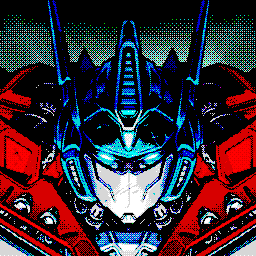Linux Mint was the distro I chose little less than a year ago when I switched to Linux. Used it with Cinammon at first and then switched to XFCE. It’s been a cool journey and I have def learned a lot.
But over time Mint has left more to be desired, most specifically, more up to date packages. Hence why I’m leaving the Debian / Ubuntu based distros to try OpenSuSE TW with Gnome.
Any advice would be appreciated
The Tumbleweed installer is great, the general feel of the distro is polished, modern, up-to-date and efficient.
As other people have said, use the terminal to update both flatpaks and packages.
One main reason I went back to Arch BTW is that there aren’t, contrary to the old self a declaration by Suse, that many software available for my use case, so I ended up with tons of ppa’s, sorry, Suse Vendors who relied on each others for libraries, and it eventually broke down my system when some stuff wasn’t available but was required, while some may be available from 4 different, private, repos.
So I found software management a nightmare: where to find, which one to choose from? Looking for stuff in yast, then in gnome-software, then in software.opensuse.org, then on the Build Service… Clicking bliindly to trust keys from people with personal repos titled “Use At Your Own Risk”. Updating that mess then was complicated, and slow because gnome-software would lock yast while checking stuff in the background. I had to kill it, even just to relaunch it to search for stuff.
But Tumbleweed installs Snapper on Btrfs by default, so rolling back shouldn’t be a problem? True, and I did it and it’s just delicious, fuck up your system, wind back in two clicks… That is, unless btrfs snapshots didn’t got unruly, and in it’s default settings ate up all my disk space, forcing me to destroy that great system.
What annoyed me most here wasn’t the software all-over-the-place mess, but that the default, factory setting of a great system they themselves contributed to the Linux world wouldn’t be working 6 months down the line on a small disk (30Gb). Thanks to the Arch Wiki I know better now, and it is easily manageable, but it was too late for me.
Went back to Arch, with snapper, snap-pac, grub-btrfs, snapper-rollback. Can’t yet wind back like in Suse at all, currently at VM number 9, trying again, wish me luck.
TL;DR: a rolling release from a reputable company with one-click rollback is a perfect solution if you keep your system relatively standard.
One main reason I went back to Arch BTW is that there aren’t, contrary to the old self a declaration by Suse, that many software available for my use case, so I ended up with tons of ppa’s, sorry, Suse Vendors who relied on each others for libraries, and it eventually broke down my system when some stuff wasn’t available but was required, while some may be available from 4 different, private, repos.
This is the reason I abandoned both Fedora and openSUSE when I tried them. I like plenty about both of them but things are just simpler on Arch. Despite Arch having less software than most distributions, it tends to be the software I actually want or need to use. The few programs not present can be installed from the AUR. Writing new PKGBUILDs is simple and there is no bureaucracy.
Arch is a pain upfront but I’ve found it tends to save you time later on. It’s not without its downsides, though; the primary one being that I’m the one responsible for managing everything and there are plenty of things I don’t know.
That would be my only complaint about OpenSUSE, the default size for partitions is too conservative. it would default to 30gig and even though there is a snapper cleanup, acheduler updates would fill it up. I now add to the recommended x2, and then the partition always hovers around 70%. The scheduled btrfs and snapper cleanup it keep it managed
Don’t be afraid to customize your install with YaST. You can add/remove packages before you do the installation.
You’ll need packman if you need restricted codecs for video.
Update with
zypper dupas a general rule.If you do enable the packman repo, expect intermittent dependency conflicts when running
zypper dup. When it happens, wait a day or so for repos to update.Edit: spelling
Yep I did learn to do the same thing. Too bad they don’t explain that when installing Thumbleweed.
I second raptir’s note about running zypper dup in the terminal to do system updates. Zypper’s a bit slow because it lacks parallel downloads, but it provides good info if there are any issues.
If you plan to use flatpaks, add the flathub repo with the --user option, and use that one to install. If I didn’t go that route, it prompted me to enter my password for every flatpak app with an update. I’m also a deplorable Plasma user 😜, I don’t know if the same behavior happens with Gnome software, it may be a weird Discover thing (shrugs).
Also, if you need the non-free multimedia codecs, run the following commands:
zypper install opi
opi codecs
Automates adding the Packman repo & switching the relevant packages.
Those are the main quirks I learned with Tumbleweed.
flatpak goes system level unless you explicitly add the repo as a user no matter the DE you use, in my experience
Unlike
aptin Debian-based distros,zypperin OpenSUSE does not have anautoremovecommand that removes the unneeded dependencies of packages that were removed. To keep your system clean, use the--clean-depsoption when removing packages.Consider OpenSuse Aeon if you want to dip into immutable systems.
I’m on immutable fedora and the experience has been great. Aeon is similar, I can recommend it any day over a traditional install
What’s the upside of immutable distributions?
They are very difficult to break. Even if there is a problematic update that would normalny kill your install you can just roll back too the previous working version.
Great for systems that you need to ‘simply work’.
Just try it out and see how you like it. It’s been around as long as it has for a reason. And if you don’t like it, there are other fast moving distros. Fedora and Arch/Endeavour have similar packages.
deleted by creator
Hence why I’m leaving the Debian / Ubuntu based distros
Ubuntu non-LTS packages are pretty up to date.
Also the LTS ones?
Yeah I wasn’t referring to those.
I made the same switch earlier this year. The only real issues I can recall were learning to update flatpak manually because it holds up the other updates if I don’t do that through the Konsole first.
Granted, that might just be my system, but I generally have had far fewer issues with Tumbleweed than I’ve ever had with Mint.
Oh, and my art tablet gets tagged as a game controller for some reason, but it works for what I need it for so I haven’t bothered to fix it.
If you want up to date go with Arch/Nix, don’t go OpenSuSE.
Why though?
Why not, though ?
Give an actual reason for why, don’t just say use arch/nix cause it’s what’s hot and hip.
Do you use Arch btw?
Does it matter ? 🤷
My only issue is software availability and management. I use the Packman repository to manage codecs and I avoid using the change vendor option; i used to change the vendor every time and ended up with a broken system, so I reinstalled and also resized my partition because I dual boot. I haven’t had problems at all.
You only need to pay attention for your needs, I recently installed systemd networking packages because they don’t come preinstalled, and YaST is very helpful in some situations like installing patterns (multiple related packages at once), mostly desktop environments. I gotta say that the openSUSE Wiki may not be enough to understand, but there is an official forum and you can also look at the Arch wiki.
Btw, GNOME is the official DE used by the developers, but KDE Plasma works very well, and all of them update constantly, you’ll have available updates every week.
Btw, GNOME is the official DE used by the developers,
Source?
Don’t forget to install codes.
Try out opi for installing apps, otherwise zypper is also great!









